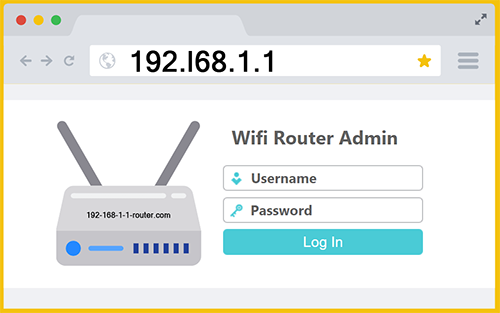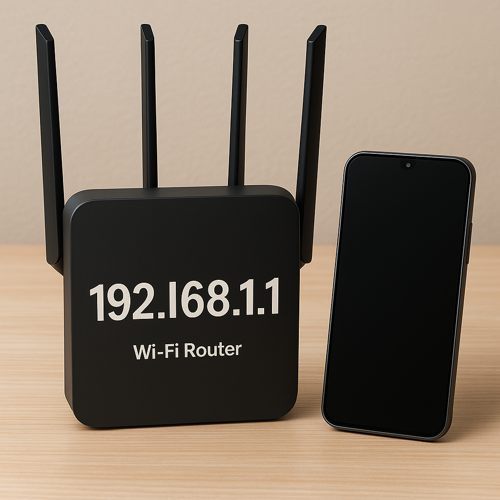192.l68.1.1
 Guide to 192.l68.1.1 Admin Login
Guide to 192.l68.1.1 Admin Login
IP address 192.168.1.1 serves as the principal gateway to the administrative control panel for countless wireless routers, a prevalent standard embraced by manufacturers worldwide. Accessing this key interface provides direct control over your router’s essential functions, enabling swift modifications to your WiFi network’s name or password.
How to Utilize 192.l68.1.1 Admin

Attempting to log into your router using the IP address 192.l68.1.1 will always fail – the issue lies in the incorrect spelling of the address. As a result, visiting https://192.l68.1.1 will never lead you to your WiFi router’s admin page. To properly access your home network settings, click this blue button or type the correct IP, 192.168.1.1, into your Chrome or Safari address bar.
Possible username (by default): admin
Possible passwords: admin or password
You can usually access your Wi-Fi router’s admin dashboard from any device connected to your network, such as your phone. This doesn’t always work though as users can sometimes input the router’s IP incorrectly, such as typing 192.l68.1.1 (which is a typo). This invalid address leads to confusion and frustration, as it will often result in a Google search instead of displaying the expected login page.
192.168.1.1 vs. 192.l68.1.1
The IP address 192.l68.1.1 is invalid because it contains a common but critical typo: the lowercase letter “l” is mistakenly used in place of the number “1” in the second segment. IP addresses must consist exclusively of numerical digits, separated by periods, with each segment (or “octet”) ranging from 0 to 255. The presence of a letter renders the entire address unreadable to Chrome or Safari, which cannot interpret it as a legitimate route to your router’s admin panel.
This subtle error often goes unnoticed because the lowercase “l” and the number “1” appear almost identical in many fonts, especially on phones or small screens. As a result, users trying to access their WiFi settings by typing 192.l68.1.1 may become angry when the page fails to load or redirects to a search engine. It’s a deceptively simple mistake that can cause confusion and delay for anyone trying to log into their router’s settings.
To resolve the issue, you must replace the incorrect “l68” with the proper “168”, ensuring the address reads 192.168.1.1 (which is legit). This is one of the most frequently used default gateway IPs for home routers worldwide. Entering this correctly formatted IP into Chrome’s address bar will take you to the router’s login screen, where you can manage your wireless network, change your password, and update security features with ease. Precision is essential when it comes to IP addresses, just one wrong character can block access entirely.
Top Selling 192.l68.1.1 Routers Globally
TP-Link – a global leader in networking products, TP-Link holds a significant market share due to its wide range of affordable and reliable routers. Many of these products are configured with IP 192.l68.1.1 as default.
Netgear – known for high-performance routers, especially the Nighthawk series, Netgear caters to both home and business users.
ASUS – offers a variety of routers, including gaming-focused models and mesh systems, appealing to tech-savvy consumers. Many ASUS routers use IP address 192.168.1.1 for admin access.
D-Link – provides a broad spectrum of networking solutions, known for their affordability and ease of use.
Huawei – despite facing regulatory challenges in some regions, Huawei remains a strong player in the router market, especially in Asia. Most routers sold by this corporation employ 192.168.1.1 for the admin login webpage.
Default Credentials
The IP address www.192.l68.1.1 is commonly used to access the admin login page of home routers, and many devices come with default username and password combinations set by the manufacturer. The most frequently used login combo is admin/admin, followed closely by admin/password, which is especially common on older Netgear models. Other popular defaults include admin/1234, used by brands like D-Link and Zyxel, and admin with a blank password, often found on TP-Link and Belkin routers. Some routers use root/admin or admin/root, while others might default to user/user. A few models, including certain Huawei routers, may use a blank username with admin as the password. If none of these combinations work, it’s best to check the label on the router itself or perform a factory reset. Always remember to change the default credentials after logging in to protect your network from unauthorized access.

Claim the Throne: Unlocking the Hidden Power of Your Router
Connecting to your WiFi router is like discovering a secret passageway into the digital heart of your home… an invisible realm where every device you own whispers data back and forth in silence. Behind that simple IP address, 192.168.1.1 (not to be mistaken with 192.l68.1.1), lies a command center more powerful than most people imagine: a place where you can shape how your Internet behaves, prioritize your gaming console over your roommate’s endless Zoom calls, or even cloak your network in stealth with hidden SSIDs. It’s not just tech… it’s sovereignty over your digital domain. Think of your router as a modern-day oracle; behind its blinking lights and plastic casing is a gateway to control, efficiency, and digital self-defense. You’re not just logging in, you’re claiming the throne.